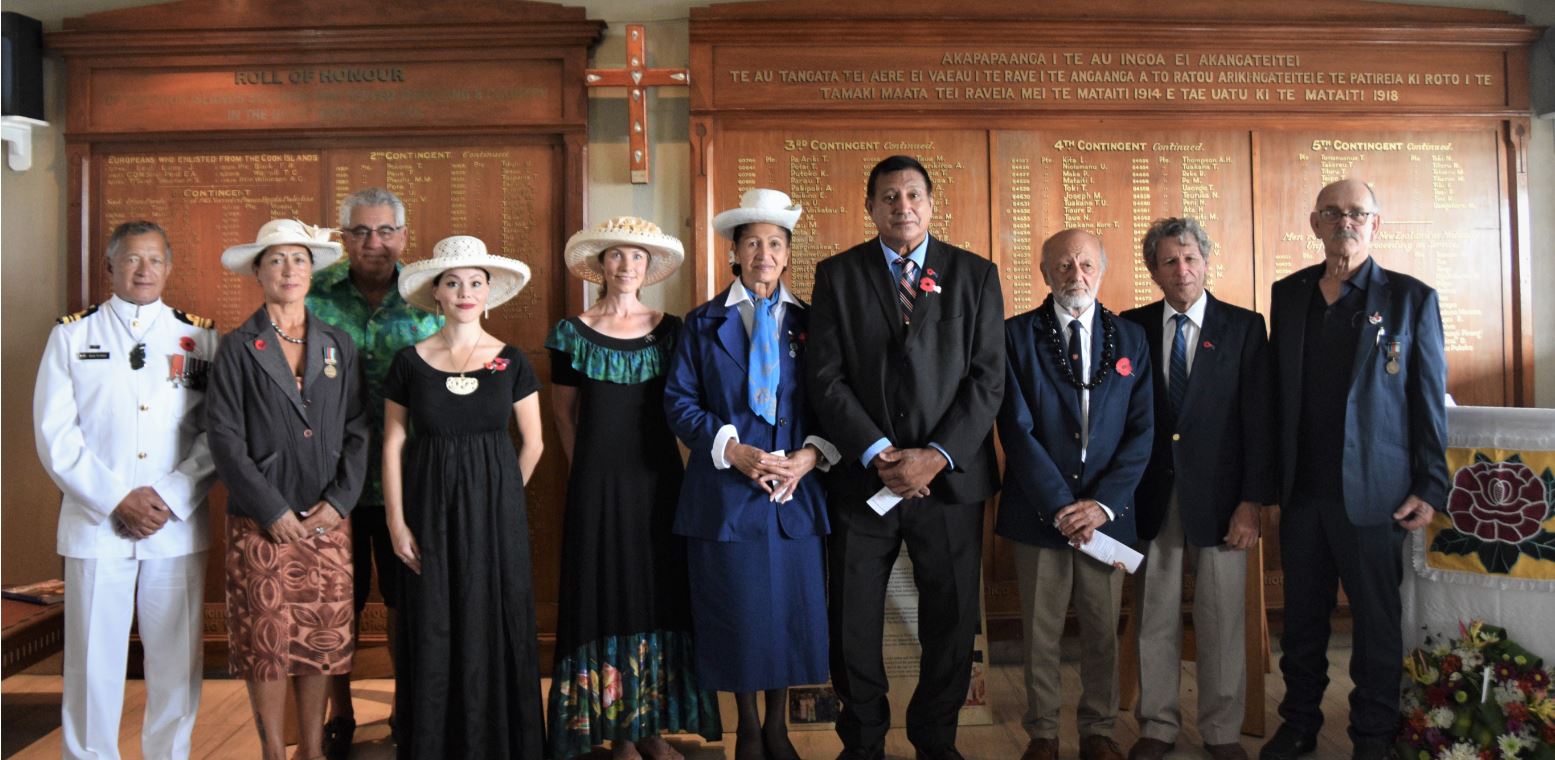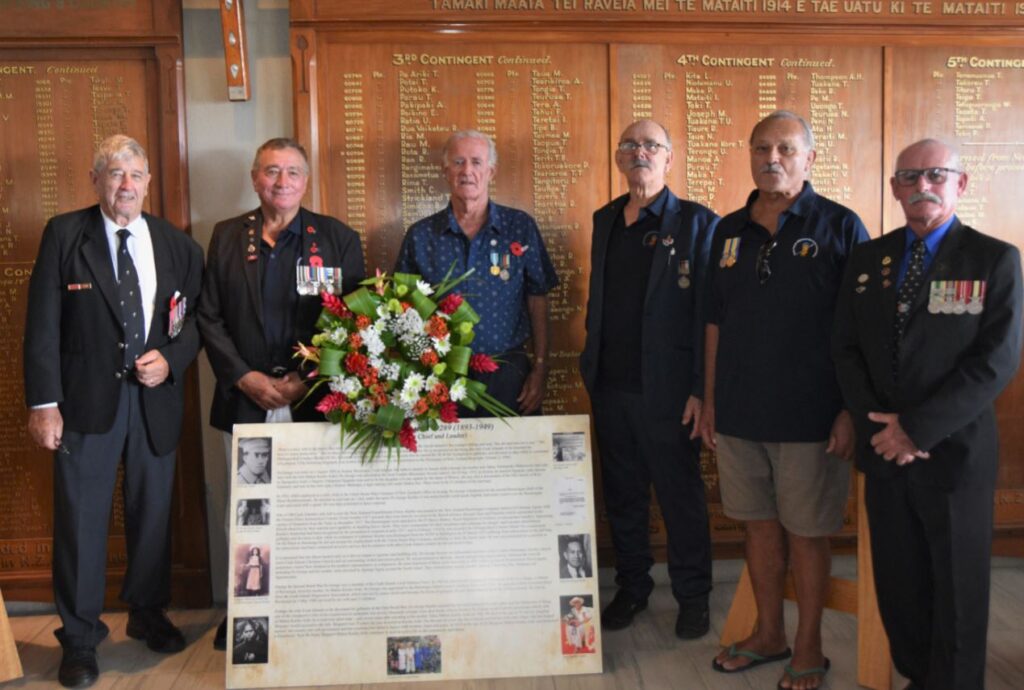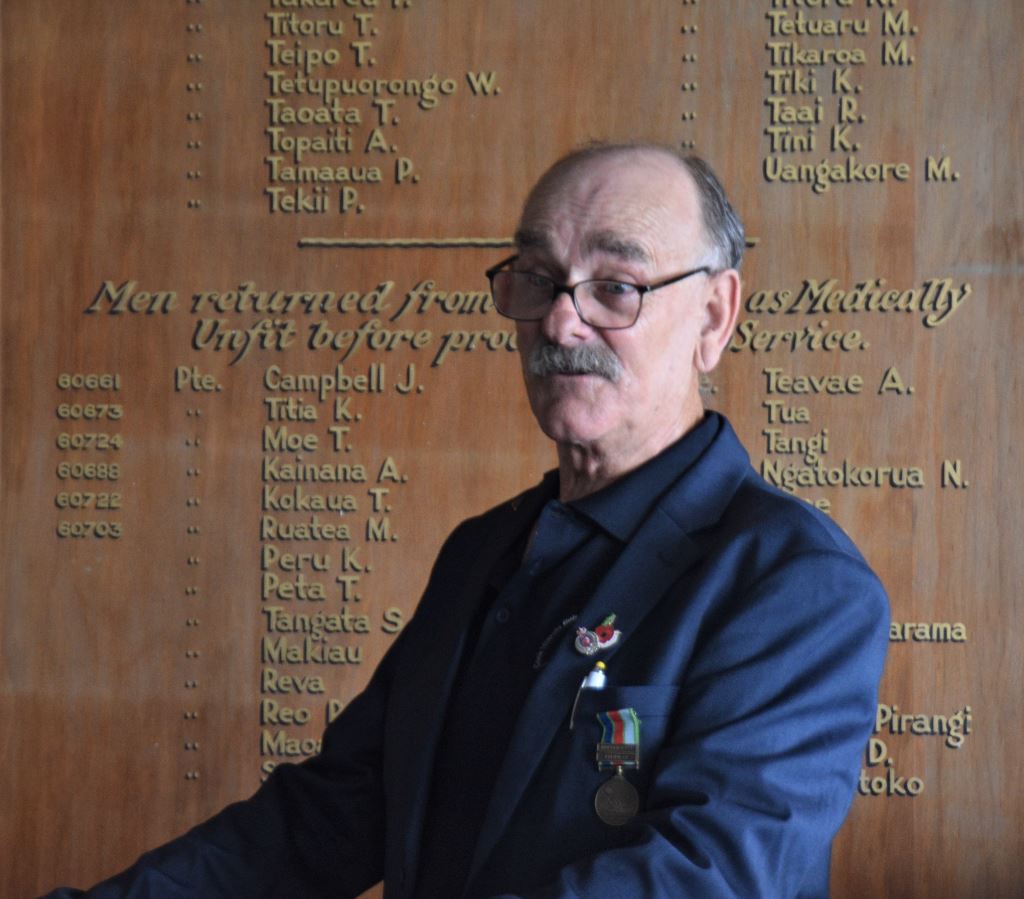Lest we forget: WWI veterans remembered
Saturday 12 November 2022 | Written by Melina Etches | Published in Local, National

The Armistice Day Remembrance service at the Cook Islands RSA. 22111128
A solemn ‘Remembrance Service’ commemorated Armistice Day at the Returned & Services Association Cook Islands (RSA) in Nikao yesterday morning.
Armistice Day is commemorated every year on November 11 to mark the anniversary of the peace agreement that ended World War I. The Armistice Treaty was signed at 11am on November 11, 1918.
In the Cook Islands the day is commemorated each year by the RSA.
New Zealand casualties, that included Cook Islanders, in WWI were said to be some 58,000 out of around 98,000 Commonwealth servicemen. Of those, 16,000 died and 41,000 were wounded.
The story of the Cook Islands – one of the smallest territories in the British empire in the First World War – is one of remarkable service and sacrifice.
The Cook Islands responded immediately to the call for service and eventually sent five contingents to the war, totalling close to 500 men.
Between 370 and 410 Cook Islanders who returned from the war died in the Cook Islands.

The Remembrance Service yesterday started with the Last Post played by John Hinton followed by a minute silence and the opening address by president of the RSA, Tom Annas.
Guest keynote speaker at the event was Paula Paniani from the Cook Islands WWI NZEF ANZAC Soldiers Research team, who document, photograph and GPS map the graves of the Cook Islands soldiers.
Patron of the RSA, Makea Karika George Ariki laid the first wreath, followed by New Zealand High Commissioner Tui Dewes, acting Australian High Commissioner Ruth Baird, and Derek Fox, the president of the Aotearoa Society of the Cook Islands.
In his address, Annas noted that the first and foremost response from the Pacific islands came from the Cook Islands. They included men from Rarotonga, Atiu, Mangaia, Mauke, Aitutaki, Mitiaro, Manihiki, Pukapuka, Penrhyn and Palmerston.
The Rarotongans served with great distinction in the Middle East war zone and they gained a reputation for their well-disciplined behaviour, he said.

“There were many incidents when the British soldiers deliberately ill treated them but an NCO of the New Zealand Expeditionary Force defended the Polynesian soldiers.
“As Colonel C.E.R Mackesy relayed: ‘It appears that the British soldiers, judging by their colour did not realise the status of these Rarotongans. The majority of these boys were college educated in New Zealand, they were treated as white people are. They would naturally resent being shoved to one side. They were renowned for their work ethic, setting new standards of speed and stamina, and the soldiers took huge pride in any job assigned to them. At the first landing of Al-Arish 30 islanders did the work of 170 British soldiers. They were admired for their physical strength and endurance, manning ammunition depots. It was here at the depots that Sgt George Karika (Corporal Pa George Karika 19289 – 1 August 1893 – 5 May 1949) earned the Distinguished Conduct medal for leading his platoon to fearlessly load eight inch shells alongside British gunners’.”
“Despite their war effort being largely forgotten by New Zealand for a long time and a lack of true figures of death as a result of war illnesses, the Rarotongan participation in the war was proof that they could forge an independent identity abroad.”
The executive committee of the Cook Islands RSA are: Patron Makea Karika George Ariki - George Taripo, President Tom Annas, Vice President John Hinton, Secretary Gail Eraio, Treasurer Robyn-Anne Hinton. Committee: Sam Samuel, Wayne Barclay, Tom Webb, Michael Short, Joan Greaves and Pira Wichman.












































